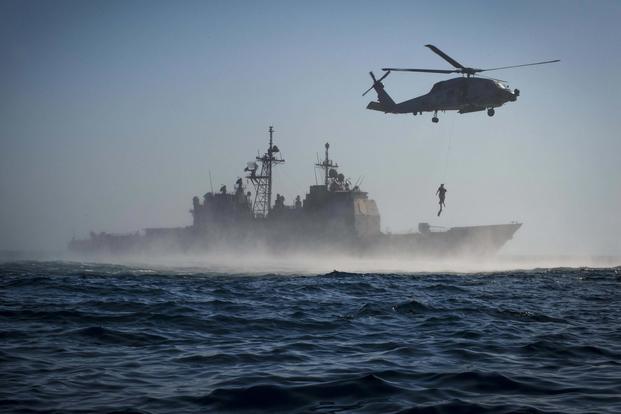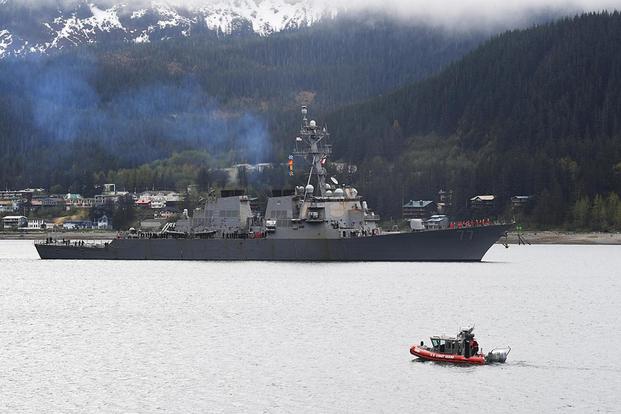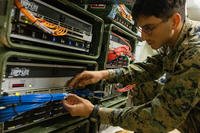With two Navy destroyers sidelined for massive repairs after deadly collisions in the Pacific this summer, the service is "surging" the deployment of a guided-missile cruiser and moving another destroyer into the Pacific to meet operational needs.
The Norfolk-based cruiser Monterey deployed Monday, bound for the 5th and 6th Fleet areas of operation.
The ship will take the place of the Pearl Harbor-based destroyer O'Kane, which will then deploy to the 7th Fleet area of operations, covering the Pacific, later this year, Lt. Cmdr. Courtney Hillson, a spokeswoman for Naval Surface Forces Atlantic, told Military.com. The surge deployment was first reported by USNI News.
Crucially, the collisions that damaged the destroyer Fitzgerald in June and the destroyer John S. McCain in August reduced the number of forward-deployed ships in the Pacific equipped with Aegis ballistic missile defense capabilities.
With North Korea's aggressive missile-testing program continuing to intensify and regular threats of war, the Navy's BMD equipment set is more in the spotlight than ever.
In April, the head of U.S. Pacific Command, Adm. Harry Harris, touted the Navy's abilities in a congressional hearing as North Korea circulated threats of turning the deployed carrier Carl Vinson into a "sea wreck."
"If it flies, it will die," Harris said.
The move to surge the Monterey years ahead of its next scheduled deployment will allow the BMD-capable O'Kane to meet operational needs in the Pacific. It also is the first time a ship has been surged under the Navy's new Optimized Fleet Response Plan, Hillson said.
The OFRP, as it's called, was introduced in fiscal 2015 to improve maintenance, training and deployment schedules in hopes of eliminating long deployment extensions, maintenance backlogs, and other problems that stress ships and sailors.
Under the plan, carrier strike group assets fit into a 36-month training and deployment cycle, with seven-month deployments standard across the fleet.
The plan also allows leaders to see which ships, if called upon, can be surged to meet operational needs. The Monterey returned from its most recent deployment in January, Hillson said, and was identified as available to meet surge needs.
"I am inspired and motivated by the crew of USS Monterey. I could not be more proud and honored to serve with this crew," Capt. Dave Stoner, Monterey's commanding officer, said in a statement. "The effort and skills demonstrated over the last two months is a testament to the strength and abilities of this crew."
While the O'Kane, when it deploys, will be one additional destroyer in the region with two sidelined, the calculus for determining the Navy's operational needs is more complex than replacing one ship with another, said Lt. Cmdr. Nicole Schwegman, a spokeswoman for U.S. Pacific Fleet.
"It's not always just a one-for-one replacement, because there are other assets that can do the mission that the McCain and Fitzgerald were able to do," she said.
With the McCain and Fitzgerald sidelined, the Navy considered itself still able to meet its mission in the Pacific, she said.
The deployment speaks to evolving operational needs. And, Schwegman said, it's possible the Navy will call for more assets in the region if needs change again.
"Our requirements changed, and we needed some additional capacity," she said. "We constantly assess where we need capability and capacity around the world."
Editor's Note: The 10th paragraph originally referenced out-of-date Navy information regarding standard deployment length under OFRP. It has been corrected to reflect the current seven-month deployment standard across the fleet.
-- Hope Hodge Seck can be reached at hope.seck@military.com. Follow her on Twitter at @HopeSeck.
































